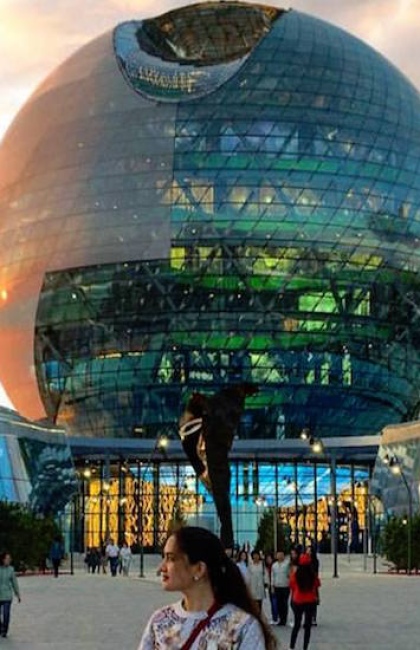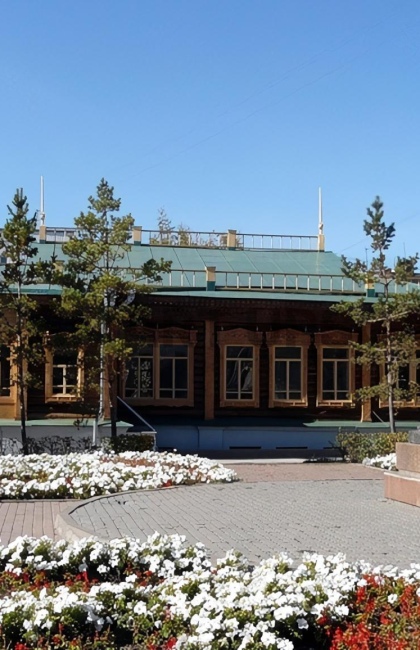Atameken Ethno-Memorial Complex
If you want to experience the beauty of Kazakhstan in just a few hours, the Atameken Ethno-Memorial Complex in Astana is a must-visit destination. Officially opened on September 8, 2001, this complex has become a popular attraction for tourists. While exploring the vast and diverse landscapes of Kazakhstan would normally take years, the Atameken Complex allows you to discover its most important landmarks and natural wonders in just a couple of hours. This unique and detailed miniature map of the country is unparalleled, with only 17 similar complexes found around the world.
Spanning an area of 1.7 hectares, the complex showcases 17 regions and the two main cities of Kazakhstan: the capital, Astana, and the largest city, Almaty. The ensemble of the center includes mountains, hills, steppes, forests, rivers, and lakes, as well as ancient temples, mausoleums, mosques, major cities, and highways. With over 400 exhibits and a continuously growing collection, the Atameken Complex offers a fascinating journey through the country's history and geography.
The park itself is semicircular and divided into five main sectors: Western, Eastern, Central, Northern, and Southern Kazakhstan. Radial belts branch off from these sectors, guiding visitors through various periods of the country's rich history. At the heart of the complex lies a multinational village, symbolizing the diverse population of Kazakhstan. Here, you can explore different types of folk dwellings, such as Kyrgyz yurts, Russian izbas, and Korean hanoks, representing the multiculturalism of the country.

Start your sightseeing adventure from the Mangyshlak Peninsula, where you'll find oil tanks, showcasing the significance of the Mangystau region as a center for oil production. Mangystau is also known as the «land of 360 saints» due to the numerous Sufis who lived, preached, and were buried in this desert region. The complex features models of underground mosques and mausoleums dedicated to some of these saints.
The Zhambyl region is represented by the mausoleum of Karakhan, a 11th-century structure located in the city of Taraz. This mausoleum honors one of the notable figures from the Karakhanid dynasty - Shah-Mahmud Bughra Karakhan.
Another notable representation is the city of Turkistan, a cultural and pilgrimage center in Kazakhstan. The complex showcases the Mausoleum of Khoja Ahmed Yassawi, a grand structure built in the late 14th century, which is recognized as a UNESCO World Heritage site.
Make sure to explore the corner dedicated to the Baikonur Cosmodrome, where you can see models of launch complexes used for spacecraft missions.

The southern capital, Almaty, and the surrounding Almaty region are also prominently featured in the complex. You can discover miniaturized versions of notable landmarks such as the Medeu Skating Rink, Kok Tobe TV Tower, Republic Square, Ascension Cathedral, and many more.
Inside a covered pavilion, you'll find a detailed model of Astana, allowing visitors to stroll through its miniature streets and witness famous sights like the Akorda Presidential Palace, Palace of Peace and Reconciliation, Nursultan Nazarbayev International Airport, Khazret Sultan Mosque, Nurzhol Boulevard, Baiterek Monument, and numerous others.
As you exit through the central gate at the end of your tour, take a moment to explore the small alley featuring balbals – stone statues representing ancient inhabitants of the region. Ancestor veneration holds a special place in Kazakh culture, and the word «atameken» translates to «land of ancestors» in Kazakh. While walking along the balbal alley, be sure to visit the observation deck, where an 11-meter state flag flutters in the sky.
Close by, you'll find the Alley of Presidents and the Square of State Symbols of Kazakhstan. This square hosts a variety of events, including award ceremonies, state prize presentations, military personnel oaths, celebrations of July 4 – the Day of State Symbols, and many more.

How to get there?
Address: Astana, 2/1 Korgaljyn highway.
The nearest bus stop to the Atameken Ethno-Memorial Complex is the «Ailand Entertainment Center». You can reach it by buses #21, 32 and 44. Also, you can take buses #12, 17, 21, 26, 36, 46, 50, 53, and 54 to get to the «Park Astana» bus stop, and then walk to the Atameken Complex through Central Park. You can also take buses #18, 28, 32, 37, 44, 45, 52 or 70 and get off at the «Saltanat Sarayi» stop.
The museum is open from May to October, seven days a week from 10:00 am to 7:00 pm; the box office is open from 9:30 am to 18:30 pm.
Other attractions near the Atameken Ethno-Memorial Complex:
- Central Park
- Ailand Entertainment Center
- Monument to Kurmangazy
- Arbat Street
- Astana Circus
- KeruenCity Shopping Mall
- Esil River Embankment
- Amphitheater on the Esil River Embankment
- Atyrau Bicycle and Pedestrian Bridge


_420x650_4ab.jpg)
 (1)_420x650_4ab.jpg)
_420x650_4ab.jpg)

_420x650_4ab.jpg)